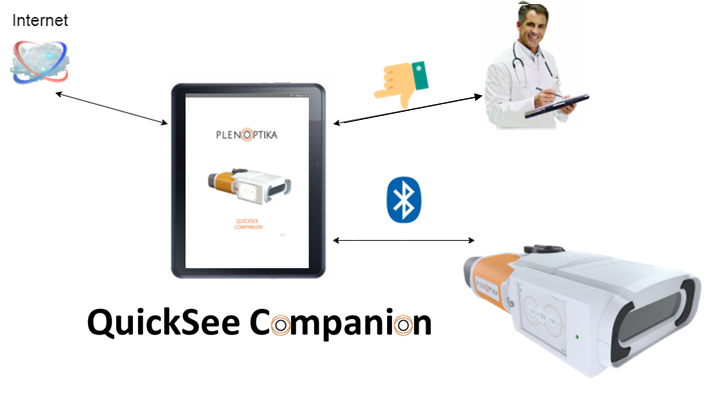Development of a Remote Interface Software for an automated refraction device

| AUTHORS / CAREER / CENTER | Ignacio Casares / Industrial technologies Engineering / Universidad Carlos III de Madrid |
| SUPERVISOR | Eduardo Lage, PhD, Universidad Autonoma de Madrid |
| TYPE | Bachelor Thesis |
| ABSTRACT | Motivation: Uncorrected refractive errors are the main cause of visual impairment worldwide. Hundreds of millions of people suffer from uncorrected refractive errors. The grand majority of this population live in low-income settings. This is not caused because of difficult access to treatment, as eyeglasses are a very cost-effective treatment and the majority of all visual impairment can be treated in some way, but due to a diagnosis barrier. This is to say, there are very few professionals which can correctly diagnose these errors. This is where the QuickSee comes in. PlenOptika Inc. (USA), in collaboration with the ‘Universidad Autónoma de Madrid’, developed the QuickSee as a solution to the global health problem caused by uncorrected refractive errors. The QuickSee is a low-cost autorefractor designed with simplicity in mind to allow personnel with minimal training to obtain an eyeglass prescription. In a few seconds, it can accurately measure existing refractive errors Problem: The QuickSee is at its last stages of development before commercial production. Further software improvements made while on the market would need to be installed in some way, and the QuickSee doesn’t have direct access to the internet to download the software updates. Moreover, eyecare professionals using the QuickSee don’t have the option to communicate results obtained with the QuickSee electronically. Resolution: A mobile application was designed and developed, as well as a server to be integrated in the QuickSee, to enhance the functionality offered by the device by itself. Importantly, the application allows direct connection with the device, so the device can connect to the internet. This allows new functionalities such as downloading the patient database contained within the QuickSee, check for new available versions of the software, install new versions of the software, and restore to previous versions, among others. Results: The developed application serves as an easy-to-use interface with the QuickSee. It could securely connect and communicate with the QuickSee. It succeeded in downloading the patient database from the QuickSee, updating and restoring its software. More importantly, the application was able to achieve this securely and steadily. Conclusions: The software developed in this project enables new important functionalities in the QuickSee in a secure way. Furthermore, this application serves as the foundation for a more advanced remote interface. |
| LINK | Confidential content |



